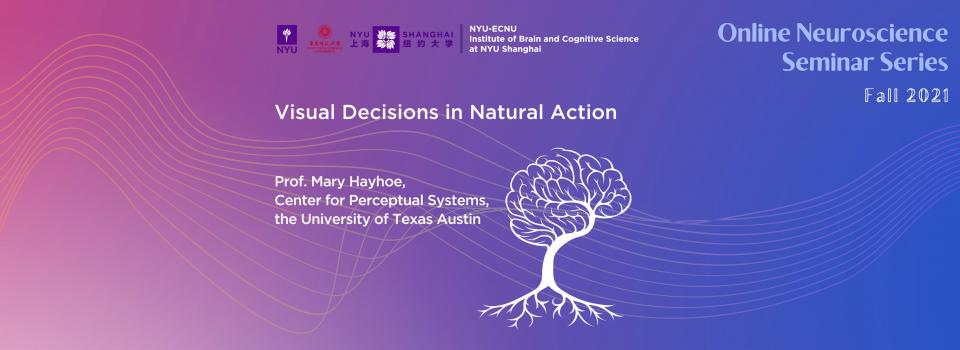
Host: Prof. Li Li, NYU Shanghai
Abstract
Natural behavior reveals the way that gaze serves the needs of the current task, and the complex cognitive control mechanisms that are involved. It has become increasingly clear that even the simplest actions involve complex decision processes that depend on an interaction of visual information, knowledge of the current environment, and the intrinsic costs and benefits of actions choices. I will explore these ideas in the context of walking in natural terrain, where we are able to recover the 3D structure of the visual environment. We show that subjects choose flexible paths that depend on the flatness of the terrain over the next few steps. Subjects trade off flatness with straightness of their paths towards the goal, indicating a nuanced trade-off between stability and energetic costs on both the time scale of the next step and longer-range constraints.
Biography
Mary Hayhoe is a Professor in the Center for Perceptual Systems at the University of Texas Austin. She received her PhD from the University of California at San Diego and was a member of the Center for Visual Sciences at the University of Rochester from 1984-2006, when she moved to UT Austin. She been a leader in developing virtual environments and experimental paradigms for the investigation of natural visually guided behavior. She has expertise in human eye movements in natural environments, especially how gaze behavior relates to attention, working memory, and cognitive goals. She served on the Board of Directors of the Vision Sciences Society from 2011-2016 and was President in 2015, and was awarded the Davida Teller Award in 2017 for her contributions to vision research. She is also on the Editorial Board of the Journal of Vision.


